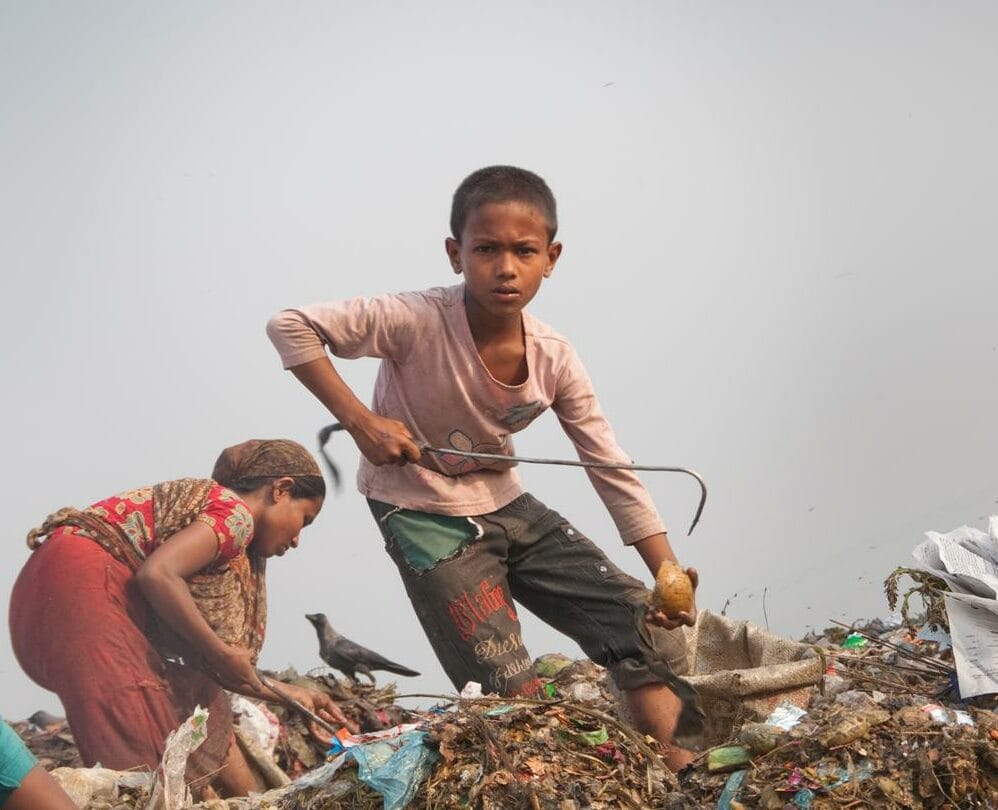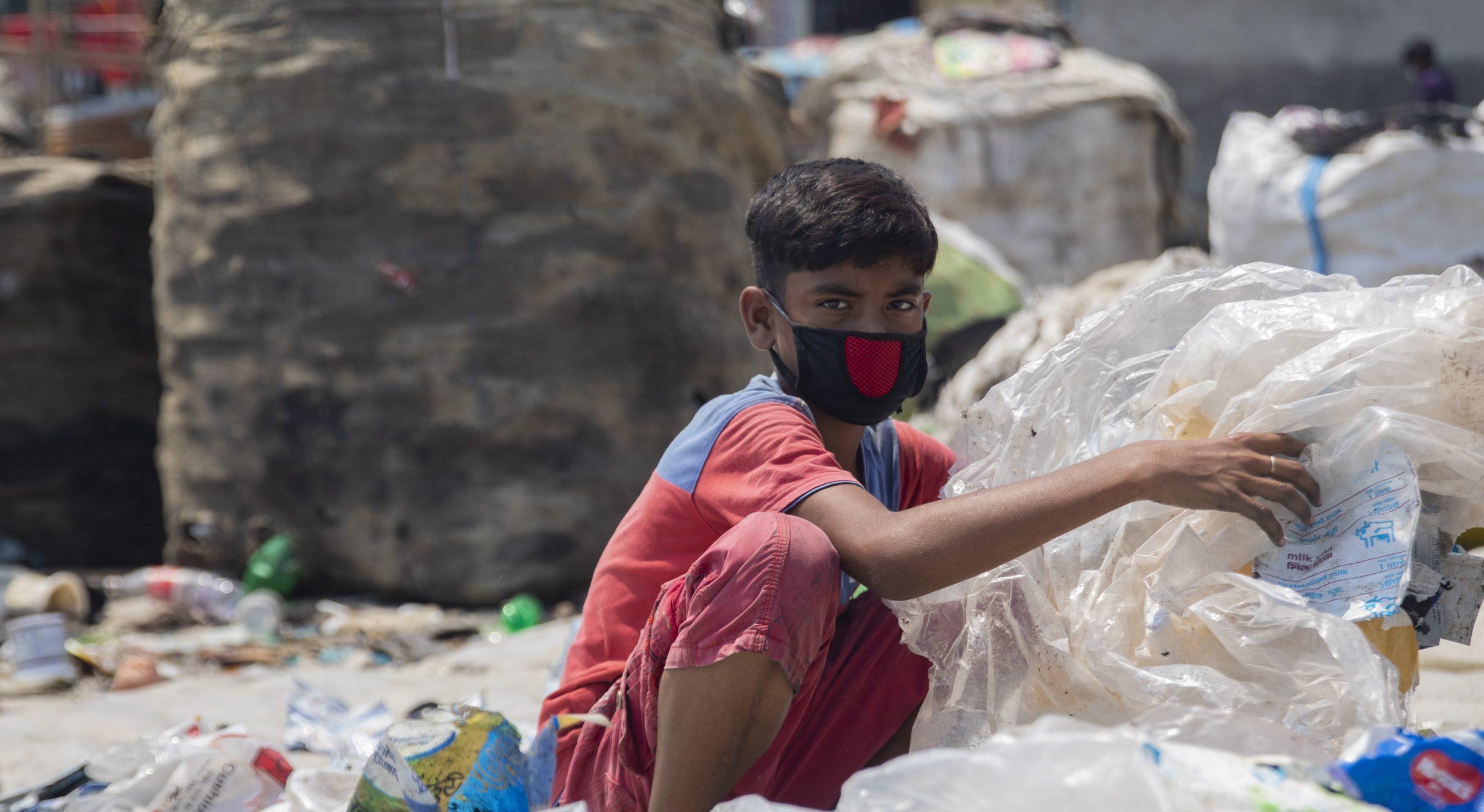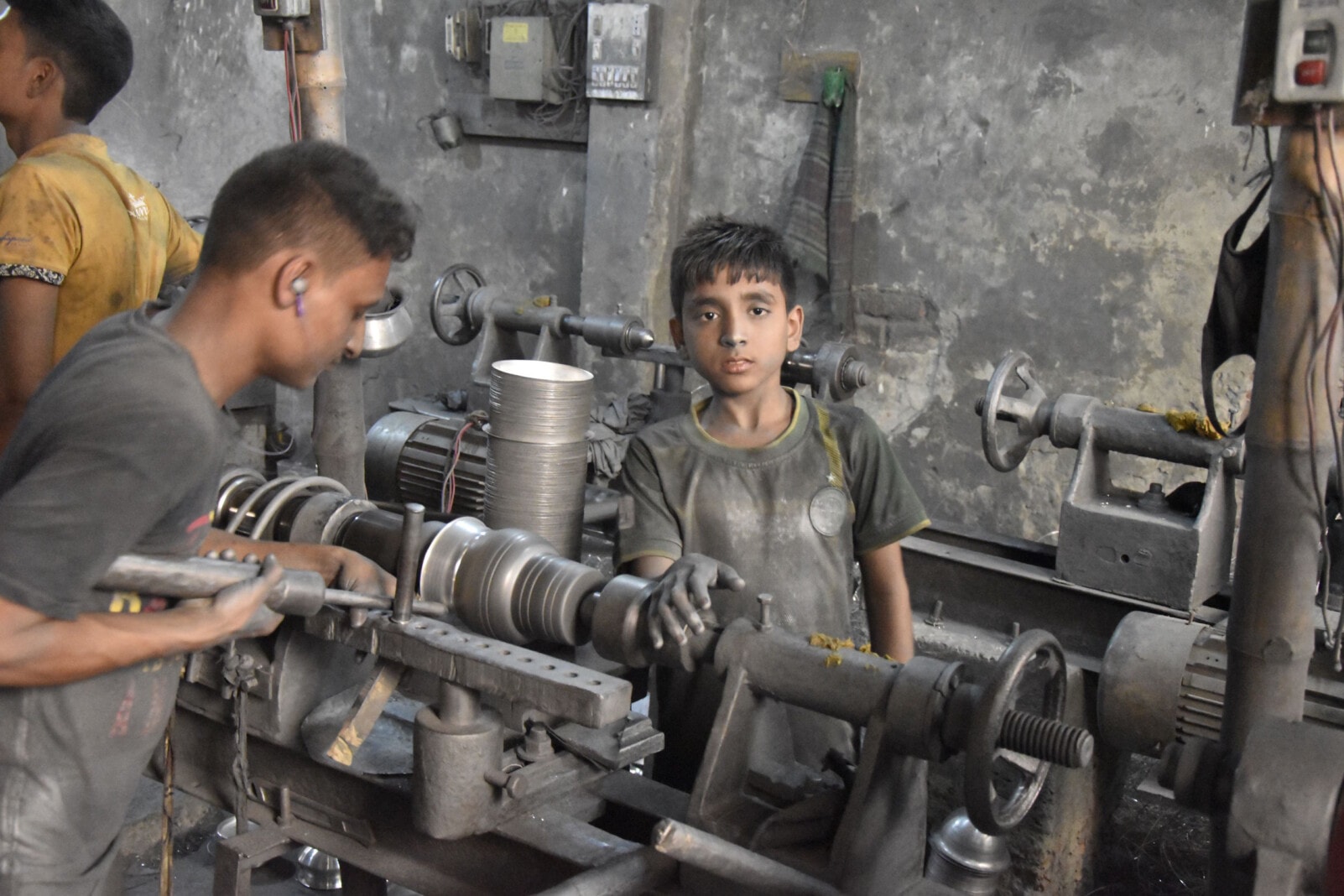In the world’s poorest countries, slightly more than 1 in 5 children are engaged in child labour
Children around the world are routinely engaged in paid and unpaid forms of work that are not harmful to them. However, they are classified as child labourers when they are either too young to work or are involved in hazardous activities that may compromise their physical, mental, social or educational development. In the least developed countries, slightly more than one in four children (ages 5 to 17) are engaged in labour that is considered detrimental to their health and development.
The issue of child labour is guided by three main international conventions: the International Labour Organization (ILO) Convention No. 138 concerning minimum age for admission to employment and Recommendation No. 146 (1973); ILO Convention No. 182 concerning the prohibition and immediate action for the elimination of the worst forms of child labour and Recommendation No. 190 (1999); and the United Nations Convention on the Rights of the Child. These conventions frame the concept of child labour and form the basis for child labour legislation enacted by countries that are signatories.
Prevalence of child labour
In sub-Saharan Africa, slightly more than 1 in 4 children aged 5 to 17 years are engaged in child labour.
Gender disparities
In all regions, boys and girls are equally likely to be involved in child labour. However, gender disparities are often observed in the types of activities carried out, with girls far more likely to be involved in unpaid household services.
Child labour data
Build and download your own customisable dataset
Resources


Notes on the data
Data sources
The main sources of data on child labour include the UNICEF-supported Multiple Indicator Cluster Surveys (MICS) and the ILO-supported Statistical Information and Monitoring Programme on Child Labour (SIMPOC) surveys. The Demographic and Health Surveys (DHS) have adopted the MICS module on child labour in its questionnaires. Many countries also produce national labour estimates and reports that often include data on child labour and/or employment among children.
Data on child labour have been collected in MICS since 2000 in more than 50 surveys through a standard module questionnaire. A standard definition of child labour was also used to calculate the prevalence of child labour across countries. In 2010, following consultations with ILO, the standard MICS questionnaire underwent a careful revision to make it consistent with currently available international standards.[1]
The MICS module covers children 5 to 17 years old and includes questions on the type of work a child does and the number of hours he or she is engaged in it. Data are collected on both economic activities (paid or unpaid work for someone who is not a member of the household, work for a family farm or business) and domestic work (household chores such as cooking, cleaning or caring for children). The MICS child labour module also collects information on hazardous working conditions.
SIMPOC questionnaires have been developed to be used in a variety of data collection methods, including in stand-alone, household-based, child labour surveys and as a separate module in other household-based surveys. No specific operational definition of child labour is used in SIMPOC surveys across countries, but estimates are calculated on the basis of the definition used in the national legislation of individual countries. As a result, the definition of child labour that is used to calculate child labour estimates differs markedly among countries, as do the resulting estimates.
In December 2008, the International Conference of Labour Statisticians (ICLS) adopted the Resolution concerning the measurement of working time. The resolution sets standards for the collection and analysis of data on child labour and calls upon all countries to develop a system of child labour statistics. The resolution also confirms that any type of work undertaken by children should be considered in the measurement of child labour, in addition to economic activities. The target populations for the resolution are children aged 5 to 17 years who, during a specified time period, were engaged in one or more of the following categories of activities: worst forms of child labour,[2] employment below the minimum age, and unpaid household services.
Main indicators
The Resolution concerning the measurement of working time sets the threshold for economic activities at 14 or more hours per week for children aged 12 to 14 years, but does not specify precise thresholds for unpaid household services due to a lack of evidence that would support such a threshold. Since then, UNICEF and ILO have both conducted data analyses to support the establishment of a threshold for the inclusion of unpaid household services in the measurement of child labour. The results of these analyses were presented at the 19th ICLS, which took place in Geneva in October 2013.[3]
UNICEF’s standard indicator for child labour includes the following:
- Age 5 to 11 years: At least 1 hour of economic work or 21 hours of unpaid household services per week.
- Age 12 to 14 years: At least 14 hours of economic work or 21 hours of unpaid household services per week.
- Age 15 to 17 years: At least 43 hours of economic work per week.
MICS module on child labour
MICS surveys has a standardized module on child labour
Download the MICS module on child labour (PDF)
References
[1] This means that data on child labour from earlier rounds of MICS are not directly comparable with data collected in subsequent rounds for any given country. The new MICS child labour module is only administered in reference to one randomly selected child within the relevant age group, rather than all children in the household. The rationale behind the changes introduced in the new MICS module can be found here: United Nations Children’s Fund, How Sensitive Are Estimates of Child Labour to Definitions?, MICS Methodological Paper No. 1, UNICEF, New York, 2012.
[2] ILO Convention No. 182 defines the worst forms of child labour, to be prohibited to all persons under 18 years, as a) all forms of slavery or practices similar to slavery, such as the sale and trafficking of children, debt bondage and serfdom and forced or compulsory labour, including forced or compulsory recruitment of children for use in armed conflict; b) the use, procuring or offering of a child for prostitution, for the production of pornography or pornographic performances; c) the use, procuring or offering of a child for illicit activities, in particular for the production and trafficking of drugs as defined in the relevant international treaties; and d) work which, by its nature or the circumstances in which it is carried out, is likely to harm the health, safety or morals of children.
[3] UNICEF, Impact of Unpaid Household Services on the Measurement of Child Labour, MICS Methodological Paper No. 2, UNICEF, New York, 2013.
